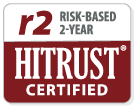This article originally appeared on Chief Healthcare Exclusive. You can read the full piece here.
A leader in the transition to value-based care answers questions about a point-of-care option.
.jpg?rect=88,37,190,179&fit=crop&auto=format)
Providers have plenty on their plates these days. The era of value-based care—of paying for outcomes—has brought with it enormous documentation requirements. Along with the shift has come a trend toward asking health systems and physician practices to assume more risk, meaning they are paid based on their ability to keep patients well. A key to compliance is following quality programs and staying on top of the latest evidence-based practices.
How can a busy physician to keep up? This is where point-of-care tools come in. Curation Health is among those offering clinical decision support alongside an electronic health record (EHR) to help physicians stay on top of clinical and quality rules and keep up with documentation as they go.
Chief Healthcare Executive™ asked Matt Lambert, MD, the chief medical officer for Curation Health, to answer questions about how the company’s technology can make life easier for doctors and save money at the same time. Lambert has more than 20 years of experience as a clinician, chief medical information officer and leader in value-based care, having served on leadership teams for EHR implementations at public health systems in New York City, the University of Washington in Seattle, Johns Hopkins, Barnabas Health, Medstar and Broward Health.
CHE: Can you give us the “elevator pitch” description of what you’re doing at Curation Health and how you seek to improve the lives of clinicians?
Lambert: Curation Health’s advanced clinical decision support platform for value-based care drives more accurate risk adjustment and improved quality program performance by curating relevant insights from disparate sources and delivering them to the point of care. With Curation Health, clinicians enjoy a streamlined, comprehensive clinical documentation process that enables better clinical and financial outcomes – while reducing administrative burdens on physicians. Curation Health is specifically focused on improving the lives of clinicians by reducing documentation burdens, while ensuring the full capture of complexity. With Curation, clinicians are empowered to spend more time caring for patient—and less time on administrative tasks.
CHE: There’s been a lot in the literature in recent years about physician burnout, and that has increased dramatically in the past year with the pandemic. What have you learned about physician burnout that informs what you’re doing at Curation Health?
Lambert: Amid the pandemic, physician burnout has been at an all-time high—and rightly so considering how harrowing this past year has been for clinicians. One of our key learnings at Curation regarding physician burnout is just how inundated physicians are with poor information. This leads to dissatisfaction with technology and unnecessary time spent confirming the right patient insights and health details. The reality is that while there is much hope in the potential of applying machine learning and natural language processing to solve for this challenge, the technology still needs human support. We are obsessed with delivering, to the point of care, the right information at the right time.
CHE: How are you trying to address a specific pain point of the process—prior authorization?
Lambert: Burdens specific to clinical documentation is where Curation provides the most value specifically for clinicians. More so, as more providers transition to value-base care, Curation Health provides them with a clinical documentation improvement platform that helps ensure the most critical patient details are captured in alignment with risk-based contracts. More insights on the value the Curation Health platform offers for providers and payers transitioning to value-based care can be found here.
CHE: Is there a specific goal for your tools—reducing back-end time by a certain percentage, increasing face time with patients by a certain number of minutes?
Lambert: From a clinician point-of-view, the main goal and value-add of the Curation Health platform is reducing the time spent on clinical documentation versus patient care. In addition, our consistent 9-out-of-10 net promoter score from physician end-users reinforces the critical value Curation provides when it comes to reducing documentation burdens for physicians.
CHE: Describe how you involve clinicians in the product development process.
Lambert: Aside from being the chief medical officer at Curation Health, I am a practicing clinician. I work hand-in-hand with our product development team to address the clinical documentation issues I myself face every day. Our team has extensive experience in provider engagement and clinical workflow optimization, and combined with ongoing feedback from our current end users, we are continuously improving our platform.
CHE: How will the movement toward interoperability and pricing transparency affect what you’re doing?
Lambert: Interoperability and price transparency have a limited direct impact on the work we are doing at Curation. We are laser-focused on helping providers and payers transition from volume to value, starting with the clinician at the point-of-care. Nonetheless, we support both of these efforts because of the critical impact that they will have on improving patient care and, hopefully, reducing healthcare costs over time.

